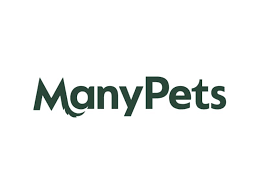Developing a hiring strategy for ManyPets


The challenge
ManyPets is a well-known pet insurance provider – but because of the hiring market, they were struggling to attract the right calibre and volume of candidates for roles focused on a niche tech stack (Python and Vue). The shortage of candidates with the desired skillset combined with the tech hiring market at the time meant recruitment was challenging and backlog of roles was building up.
Initially, ManyPets had just one internal recruiter and relied on an agency PSL of three. They were looking for roles across Software Engineering, Data, Cyber Security, Site Reliability Engineering, QA, Design, Product and Engineering Manager/Director etc, but only made one hire in six months using that model. Something wasn’t quite working.
ManyPets sought our input on all parts of the hiring strategy: from asking for insight on skillset, to estimating time to hire. We also advised on contracts, and how and where to hire based on what we know about the market.
Our solution
We came on board to take ownership of these tough to fill roles, with our initial team consisting of one Talent Manager and one Talent Partner. By the end of us working together, the scope had increased so much that a team of six of us were embedded within ManyPets delivering on a much larger project.
With top tech candidates being in such high demand, many candidates wanted to work on a freelance basis to set their own working hours and be selective about projects. Candidates for the roles we were hiring for often like to work remotely too, so attracting them to an in-house role meant we had some work to do in terms of crafting a good package.
Candidates often get inundated by recruiters, so it was important to us that we took a different approach for ManyPets. We focused on building employer brand, forming relationships, and contributing communities as a way of getting on the radar of top talent.
We strategically aligned the ManyPets brand with conferences like BrumJS (the largest Javascript meetup in the UK) which they continue to sponsor, and represented them at TechMids conference.
By building their reputation in the community, we built trust as a result. Our view was to think long term: we needed to fill roles, but we also wanted to leave a legacy with ManyPets and prove to them they’d made a good investment with us.
Another key part of our involvement was getting candidates over the line. At the time, many candidates were getting counteroffers; even if a candidate loved everything about an organisation, there was no guarantee they’d take the role as it would depend on what their current company was prepared to offer in response to get them to stay.
We worked hard to understand what candidates truly wanted, because salaries were so crazy we needed to go beyond that. What was ManyPets’ purpose and mission? How were they championing tech for good? This was important for a lot of candidates.
When we got candidates to interview stage, we recognised that the process had room for improvement and we spotted opportunities to help make it more inclusive. We introduced video interviews (they were previously doing face to face interviews early on in the process) to reduce time and increase efficiency. We also considered neurodiversity and made suggestions on how to present job ad information in different formats, to improve accessibility and inclusivity.
We brought in additional sourcing tools including HackaJob & Otta directly to the business. We also introducing a new testing platform (Codility) to offer the flexibility of custom testing, and marketing automation to increase efficiency.
We offered interview training for the hiring managers to hone their skills. Some of them had never interviewed people before, so we provided structure and advice to ensure clear decision making. We also handled communication with candidates on behalf of hiring managers. It was critical that these candidates were managed carefully, as many of them had counter-offers or other opportunities on the table that we needed to contend with.
We organised and delivered a hiring day for people from companies who went into administration to offer opportunity to local talent. It was an in-person meet and greet (and an alternative group virtual meeting) where hiring managers from different departments were available to talk about their division and how they operate. If anyone was interested in learning more or joining the team, we booked 121 follow ups to discuss roles and specifics. This was followed by a streamlined process to get the best talent into the business as soon as possible.
With the client’s uncertainty around exact hiring needs, the unstable market and the specialist tech stack, headhunting was key to finding the right candidates. Utilising the talent pool was crucial; by not having any downtime and maintaining engagement, we created strong brand awareness among target candidates that will benefit ManyPets for years to come.
Having us as the dedicated team for tech and engineering hiring meant internal capacity increased, allowing the Head of Talent to focus on talent development, retention and talent strategy. By us having the sole focus on tech hiring, we were able to maximise the candidate experience, reduce time to hire and time to fill as well as talent pool top technical talent for the future.
Results
- We placed a total of 99 roles over the three year project, with 67 permanent hires and 32 contract hires, whilst building a digital nomad team across Europe.
- We achieved a 45% reduction in time to hire and a massive 625% growth in the tech team.
- We successfully filled all senior manager and director positions with the precise skills needed; both technical and soft skills, to help build a truly cohesive leadership team and drive the business forward.
- The average cost of hire was £9,263 for Perm, and £8,297 per hire for Contract, saving ManyPets a total of £389,601 on agency fees.
